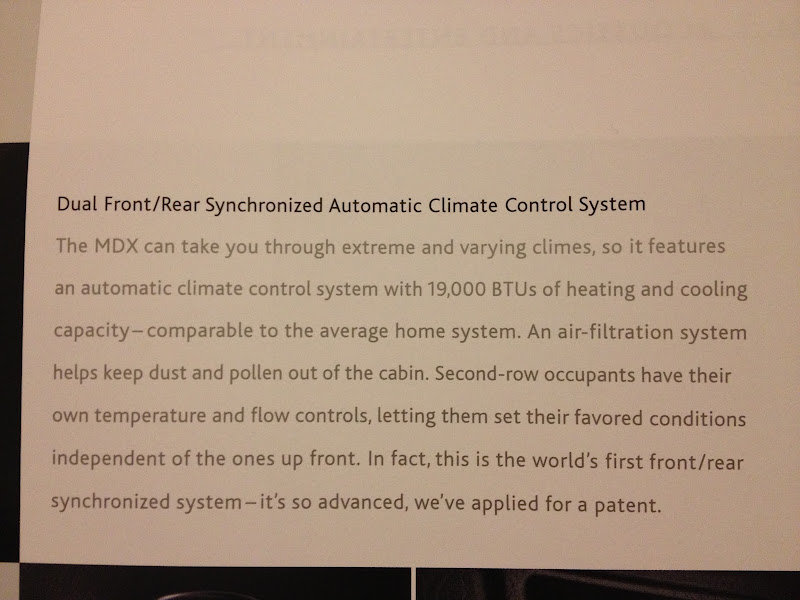I was mistaken. Our MDX has a 19,000 BTU HVAC system.
I disagree that a BTU rating on an automotive HVAC system is not helpful information. It gives a general idea of a system's performance. It won't tell you everything, but it at least tells you something. Like an engine's rated horsepower. One could make the argument that people don't need to know the horsepower, they just expect the car to accelerate sufficiently. Well...true. But a horsepower figure still gives one a general idea about a car's performance...and indicates how much reserve an engine might have when operated under heavier loads.
If you live in a hot area, and are looking at two cars, and one has a 15,000 BTU HVAC system and one has a 9,500 BTU HVAC system, it at least might give you a clue that the one with the larger system would perform better under severe conditions. That may not may not help make a purchase decision, but at least you are more informed going in.

I disagree that a BTU rating on an automotive HVAC system is not helpful information. It gives a general idea of a system's performance. It won't tell you everything, but it at least tells you something. Like an engine's rated horsepower. One could make the argument that people don't need to know the horsepower, they just expect the car to accelerate sufficiently. Well...true. But a horsepower figure still gives one a general idea about a car's performance...and indicates how much reserve an engine might have when operated under heavier loads.
If you live in a hot area, and are looking at two cars, and one has a 15,000 BTU HVAC system and one has a 9,500 BTU HVAC system, it at least might give you a clue that the one with the larger system would perform better under severe conditions. That may not may not help make a purchase decision, but at least you are more informed going in.

